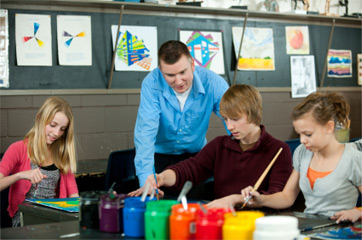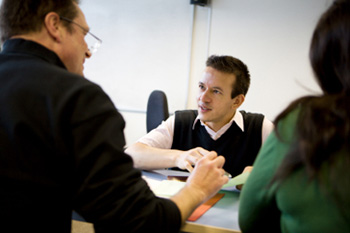Art For Recess: A Fair Trade?
With budget cuts and an often daunting emphasis on standardized tests, there is little time in the school day for art and other enrichment classes. This has led many New York City schools to sacrifice recess for art in an attempt to pack education into every available moment. But this tradeoff comes with a cost.

 |
Finding a Place for Art
At many of the top public schools throughout New York City, students are spending what would be recess time rehearsing plays, learning to play the tuba or designing video games. While impromptu kickball games and hopscotch may be fun, the students are choosing to take part in more focused learning opportunities. They're making the choice because there isn't any other space to give.
The kids are sacrificing recess with the full support of parents, teachers and administrators. At P.S. 188, for example, the parents association raised $12,500 last year to support lunchtime clubs. In fact, that school's principal runs a musical theater club and multiple book clubs. In most cases, teachers supervise the activities, which can cover topics as diverse as comic book design, knitting and magic.
Short-Term Success
Thus far, the experiment of trading recess for art is a popular one. The students report enjoying the options and challenges. Perhaps more significantly, they like that the activities usually consist of small groups. In schools where class sizes can exceed 30 students, the opportunity to learn a new skill alongside a small handful of peers is unique and cherished.
The schools are also going to great lengths to ensure that student participation is voluntary and based on sincere interest. At many schools around the country, students are sent home with forms detailing the possible clubs and activities in which they can participate. Parents may then choose for the students based on the activities the parents believe are most important. At P.S. 188, for example, no forms go home. This leads to kids signing up based on their own curiosity.
The Need for Recess
Recess isn't required in New York City public schools. But perhaps it should be. The city's Department of Education recommends at least 20 minutes of recess, preferably in an outdoor setting. Also, a 2009 study in the medical journal Pediatrics found that children's behavior and academic performance improves when recess is a part of their day.
Learning pottery may be enriching, but the unstructured and mentally relaxing time of recess is critical. While the schools that are trading recess for art classes may be reaping the benefits in the short term, they risk overly taxing their students. Evidence of that strain may take time to become apparent, but the importance of recess shouldn't be underestimated.
Other Articles You May Be Interested In
-
What Fewer Tests Could Mean for Your Child's Education

Are science and history less important than reading and math? Some Virginia lawmakers might seem to think so; the state Senate voted in January 2012 to pass a bill that would essentially eliminate standardized testing in science and history for third-graders. Would less testing have a negative impact on our children's...
-
Do Standardized Tests Make Teachers Cheat?

In 2002, the No Child Left Behind Act was signed into law. The bill aimed to improve standards and performance in public schools across the nation. That goal is currently pursued through rigorous standardized testing, the results of which trigger rewards and penalties for teachers and schools. Yet a recent spate of stories from...
We Found 7 Tutors You Might Be Interested In
Huntington Learning

- What Huntington Learning offers:
- Online and in-center tutoring
- One on one tutoring
- Every Huntington tutor is certified and trained extensively on the most effective teaching methods
K12

- What K12 offers:
- Online tutoring
- Has a strong and effective partnership with public and private schools
- AdvancED-accredited corporation meeting the highest standards of educational management
Kaplan Kids

- What Kaplan Kids offers:
- Online tutoring
- Customized learning plans
- Real-Time Progress Reports track your child's progress
Kumon

- What Kumon offers:
- In-center tutoring
- Individualized programs for your child
- Helps your child develop the skills and study habits needed to improve their academic performance
Sylvan Learning

- What Sylvan Learning offers:
- Online and in-center tutoring
- Sylvan tutors are certified teachers who provide personalized instruction
- Regular assessment and progress reports
Tutor Doctor

- What Tutor Doctor offers:
- In-Home tutoring
- One on one attention by the tutor
- Develops personlized programs by working with your child's existing homework
TutorVista

- What TutorVista offers:
- Online tutoring
- Student works one-on-one with a professional tutor
- Using the virtual whiteboard workspace to share problems, solutions and explanations